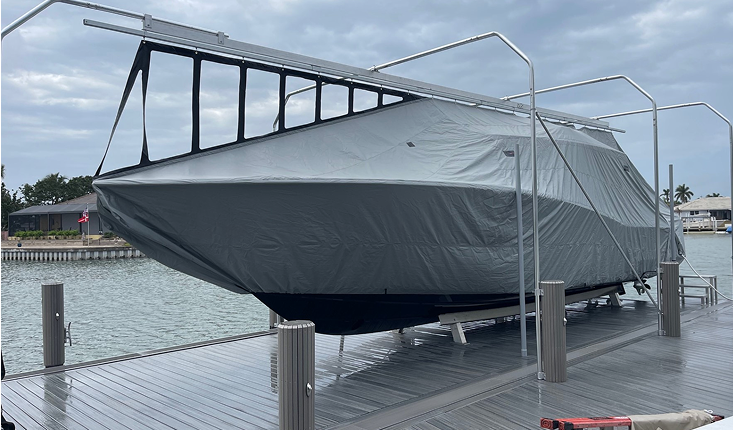
Key Takeaways
- Innovative boat covers dramatically improve protection, cut down on maintenance, and offer high-tech convenience for all types of boaters.
- Modern covers add significant safety value, both by shielding against weather and deterring theft, while automated features increase peace of mind.
- Quality materials and advanced automation significantly enhance durability and efficiency, resulting in proven savings over time.
- Consistent, simple maintenance extends the life of boat covers and maximizes owner investment, no matter the climate or storage setup.
Smart Features Shaping Today’s Boat Covers
Smart technology is driving a revolution in the way boaters protect their vessels. Today’s modern covers offer far more than basic weatherproofing—they’re redefining what convenience looks like at the dock, the marina, or in home storage. Leading designs now come with push-button remote controls, motorized extension arms, integrated sensors that detect rain or sun, and even cloud-connected apps for remote activation. These advances matter for everyday users, who benefit from an easier, more reliable experience—no more wrestling with heavy tarps or awkward straps in rough weather. All of these innovations have led to growing interest in learning about the touchless boat cover cost and whether these smart upgrades deliver value for both seasonal and year-round boat owners.
For many, these features signify the end of the cycle of manual labor and constant upkeep. Instead, covers can respond to the weather on their own, roll open to reveal a spotless deck, or retract safely with a single click. According to a thorough review on technology innovations in boating, such automation isn’t just about comfort—it prolongs the lifespan of a boat by eliminating exposure to sudden storms, UV rays, and debris. Boaters are no longer limited by physical strength, making these smart covers especially helpful for solo enthusiasts and older individuals alike.
Material Matters: What Modern Covers Are Made Of
Boat covers are now made from high-performance materials like solution-dyed acrylics, polyester weaves, and advanced waterproofing membranes. These materials are specifically designed for use in the marine environment, preventing water absorption, stretching, and brittleness. UV-inhibiting coatings protect gel coats and furnishings from sun damage. These covers last several seasons longer than their predecessors, saving on maintenance and replacements. Specialized stitching and layered construction offer extra security against high winds and heavy rains. Some covers are even resistant to mold, mildew, and bacteria, ensuring a cleaner, healthier on-board environment.
How Convenience Factors Shape Boater Experiences
Boaters are enjoying the convenience of custom-tailored covers that snap or zip in place in seconds, often with tensioned supports to eliminate sagging and water pooling. Smart motorized units deploy automatically when weather conditions change, reducing effort. One-touch mechanisms for fast retraction and opening, arched supports, and contoured designs to deflect rain, along with custom-fit templates for every boat style, reduce sloppy overhangs and exposed corners. This results in more time spent enjoying the water and less time corralling stubborn tarps, benefiting even casual boaters or families.
Boosting Safety Through Better Boat Protection
Modern boat covers not only protect against bad weather but also enhance safety and security. They block out harmful elements, ensuring sensitive electronics, upholstery, and valuable gear remain protected. Built-in lock systems, tamper alarms, and reinforced attachments deter theft and vandalism, giving owners confidence. They also prevent injury by keeping walkways clear and covering sharp hardware, especially for families with children or seniors. A well-designed cover is valuable for both insurance and boat longevity, providing peace of mind and reducing costly incidents, especially during off-season storage or adverse weather conditions.
Easy Maintenance: Tips for Longer-Lasting Covers
Boat covers, despite their advanced features, still require regular rinsing and inspection to maintain their longevity. Saltwater, sun exposure, wind, and birds can leave grime or stains, so gentle, manufacturer-approved products are recommended. Covers should be hung or spread out to dry completely after use and stored in a cool, dry place indoors during the off-season. Look for weak points, such as worn seams, tired grommets, or loose automated parts, and repair them immediately. These simple tips can extend the life of your cover, making it a cost-effective investment. Some automated models even feature self-tensioning or quick-release components.
What To Look For When Choosing A Boat Cover
To choose the best boat cover, measure your boat accurately and match it with covers made for your make and model. Consider location, UV resistance, and weather ratings for optimal protection. Automated features can enhance efficiency. Look for warranty details, material specifications, and weather ratings. Personal recommendations and online reviews can provide real-world results. The best cover should strike a balance between convenience, security, smart features, and material innovation.
Looking Ahead: Trends Shaping The Industry
The next generation of boat covers is shaping up to be even more impressive and eco-friendly. Companies are experimenting with smart textiles crafted from recycled ocean plastics and biodegradable components—a move that not only reduces environmental impact but also resonates with a new generation of eco-conscious boaters. Smart systems are integrating solar panels to power remote controls and automated arms, improving energy efficiency without sacrificing convenience.
Digital monitoring and weather-alert integrations are gaining popularity, providing owners with real-time updates on vessel safety through mobile apps. Industry momentum is also moving toward designs that are as attractive as they are protective, ensuring covers don’t just work well but look sleek at the dock. As awareness of the environmental impacts of plastics in marine environments rises, forward-thinking manufacturers are racing to develop options that preserve both boats and the planet for the long term.